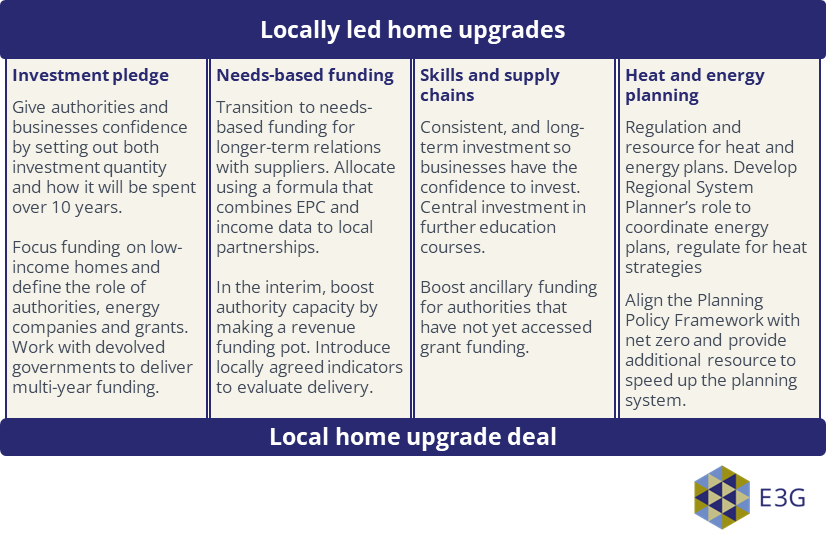Local authorities are uniquely positioned to coordinate area-based retrofit programmes. However, at present, many do not even have internal capacity to apply for grant schemes. A new deal for locally led delivery is needed to address the postcode lottery: providing clarity and a stable model for allocating funding to authorities.
This briefing sets out how locally led approaches to home upgrades should develop, in order to contribute to a well-functioning ecosystem of retrofit schemes. After ten years of cuts to local authorities’ core services, and amid ongoing financial and supply chain challenges, a holistic approach is needed to level up access and end the postcode lottery.
There is widespread consensus on the need to upgrade the UK’s cold and leaky housing stock. Benefits include greater energy security, lower bills, better health outcomes and cutting carbon emissions. Moreover, retrofitting is essential if the UK is to reach its legally binding net zero and fuel poverty targets. During the current parliament, the Conservative government increased public investment in home upgrade schemes to around £1bn a year, and have committed an increase to £2bn a year in 2025–28. If elected, Labour would raise investment to around £2.6bn a year in 2025–30.
Despite the benefits, delivery problems have meant the underspend of the main programmes was high; 43% of LAD and SHDF and 79% of HUG. This issue was felt most acutely in Home Upgrade Grant phase 1, where only 21% of funds were spent. Delivery shortfalls were caused by problems with scheme design, low capacity among installers, and the disruption due to the COVID-19 pandemic and Russia’s invasion of Ukraine. The tight timelines to apply for funding and delayed scheme guidance made delivery difficult for authorities. Many less experienced authorities relied on large consortia to manage projects. When supply chain issues affected consortia, millions of pounds worth of funding were not delivered. The new deal should be underpinned by action on four areas, outlined in the figure below. These commitments will form the basis of a stable and long-term model for funding home upgrades in low-income households.



